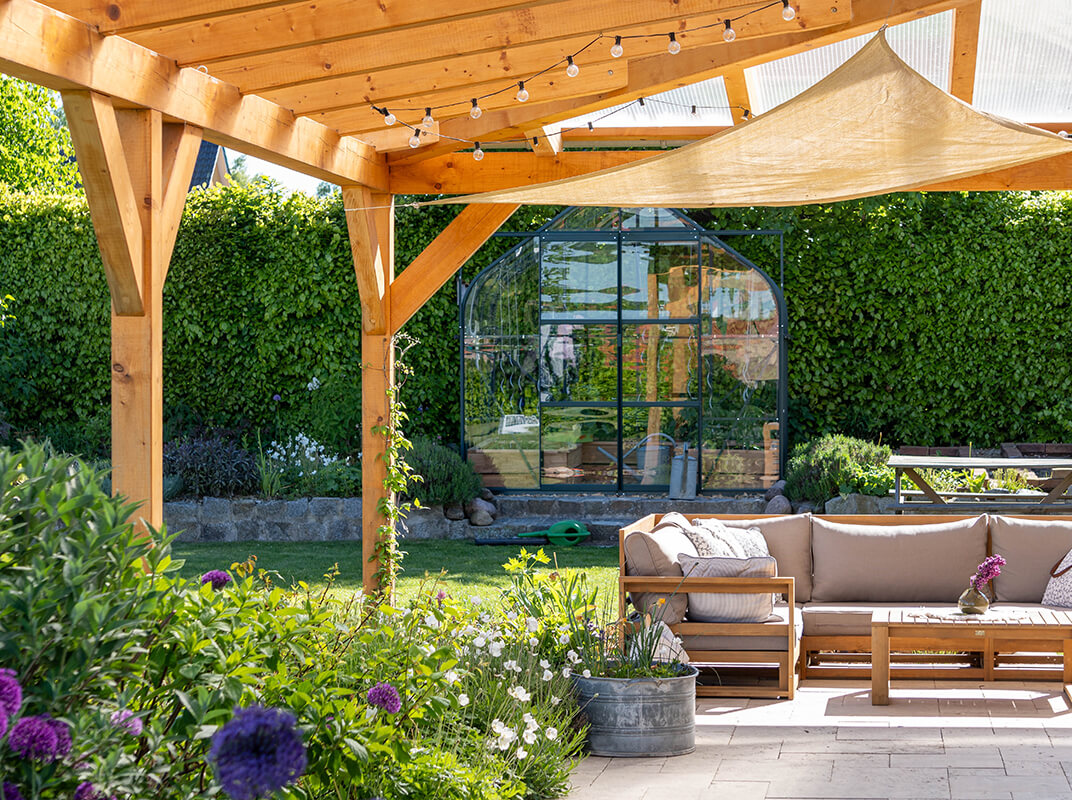
Patio season is here, which means plenty of backyard BBQs and relaxing afternoons spent outdoors. In summer, the sunshine guides our leisurely activities.
However, to keep comfortable, balancing sunlight and shade with a patio cover makes a difference. The question is, where to begin?
In this buying guide, we’re sharing top tips and considerations to help you make the best decision to maximize your backyard time. From building materials to budget-saving recommendations, here are the main factors that will affect your final decision.
Paint vs. Stain
The first thing to consider when building a patio cover is whether you plan to paint or stain it. This will guide the direction of the building materials used.
For paint, a rough Douglas Fir is an affordable, high-quality softwood. Meanwhile, Redwood or Cedar is best suited for staining purposes. Either way, J&W Lumber carries a variety of stain colors to determine which will best match the aesthetic you want to achieve.
Pro Tip: It’s essential to use oil-based stains to penetrate the wood from the inside out and preserve the look of your patio cover.
Solid Roof vs. Lattice
A solid roof patio cover provides full coverage to protect outdoor furniture from damage. Whereas, a typical lattice top pergola uses 2x2s or 3x3s with 50% spacing to allow sunlight through while still providing an adequate amount of shade.
Borneo Mahogany and Hemlock are popular wood materials to use for the ceiling of your solid roof cover, plus there are a variety of redwood and cedar lattice designs to make it customizable for the size and style of patio cover you want.
A solid patio cover can be built with metal roofing on top to block the sun and rain, with tongue-and-groove boards underneath to create a pretty, warm, and finished look. Additionally, an alternative is to install decorative screen panels to create the optimal aesthetic.
Pro Tip: If you like the look of lattice but want to control the amount of direct sunlight, adding a shade cloth can provide the benefits of a solid patio cover to keep you cooler in the summer.
Shade vs. Direct Sunlight
Speaking of adding shade, Sundance aluminum patio covers are equipped with adjustable louvers, which allow you to control the amount of shade with the push of a button. As the sun shifts position throughout the day, you maintain how much direct light you want on your patio.
A more cost-effective and popular aluminium patio cover is Duralum; this low-maintenance, long-lasting cover can create a customized look by choosing between different styles, colors, and beam end cuts to truly make the design your own.
Pro Tip: Installing a ceiling fan on a solid patio cover improves airflow to keep your outdoor space comfortable even on the sunniest days.
Attached vs. Freestanding
Typically, attaching a patio cover to the house is less expensive since it requires fewer building materials and less labor.
However, there’s a common misconception that if you don’t attach a patio cover to your house, you don’t need a permit. Check with your city guidelines for building regulations and associated costs that may add to your final budget.
Either way, when building a patio cover, you can pick between using silver or black decorative hardware to streamline or enhance the final look.
Black decorative hardware is a sleek, eye-catching option delivering a modern finish. Meanwhile, certain rafter and beam end cuts conceal the hardware altogether to create a clean, minimal appeal.
Pro Tip: Like the appearance of black decorative hardware but trying to stay within budget? Use black spray paint to cover silver hardware for a more affordable solution.
Let J&W Lumber Help You Get Started on Your Patio Cover Project
There are plenty of options to choose from when building your ideal patio cover. Deciding between a solid or lattice top and an attached or freestanding structure is your first step.
To get an idea of what will work best for your backyard, design preference, and budget, stop by your local J&W Lumber store and check out our displays.
Our friendly representatives can guide you in the right direction based on the size and style of patio cover you’d like to build, so you can make an informed buying decision before getting started.
